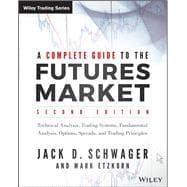The essential futures market reference guide
A Complete Guide to the Futures Market is the comprehensive resource for futures traders and analysts. Spanning everything from technical analysis, trading systems, and fundamental analysis to options, spreads, and practical trading principles, A Complete Guide is required reading for any trader or investor who wants to successfully navigate the futures market.
Clear, concise, and to the point, this fully revised and updated second edition provides a solid foundation in futures market basics, details key analysis and forecasting techniques, explores advanced trading concepts, and illustrates the practical application of these ideas with hundreds of market examples. A Complete Guide to the Futures Market:
- Details different trading and analytical approaches, including chart analysis, technical indicators and trading systems, regression analysis, and fundamental market models.
- Separates misleading market myths from reality.
- Gives step-by-step instruction for developing and testing original trading ideas and systems.
- Illustrates a wide range of option strategies, and explains the trading implications of each.
- Details a wealth of practical trading guidelines and market insights from a recognized trading authority.
Trading futures without a firm grasp of this market’s realities and nuances is a recipe for losing money. A Complete Guide to the Futures Market offers serious traders and investors the tools to keep themselves on the right side of the ledger.









